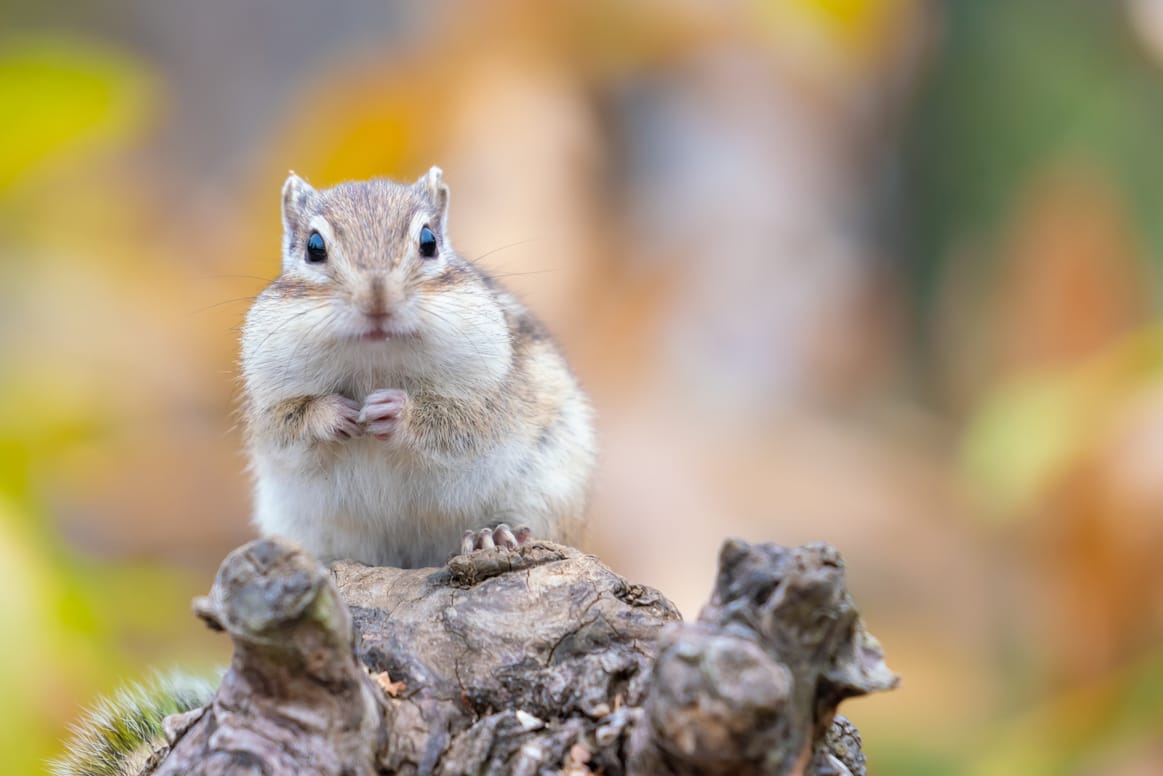
Contents

Squirrels and rats have more in common that you might think, but there is still so much that separates the two. True, they are both rodents, yet they have different habits and habitats. Comparing their appearance, diet, and many other attributes, you will better identify between the two.
The most noticeable difference with squirrels vs rats is their appearance. Squirrels are likely to be larger than rats, and they have that big, bushy tail that can stick up. Rats are often the smaller of the two. A rat’s tail is much thinner and does not have hair.
You are more likely to spot a squirrel because like humans squirrels are diurnal, meaning they are primarily active during the day. Squirrels have sharper vision, as well as better peripheral vision. The advantages of those characteristics means squirrels can detect predators more easily and hunt for food more efficiently during the day. Apart from a flying squirrel, your typical squirrel has poor nighttime vision.
Rats are more difficult to spot, mostly because they are nocturnal and not as active in the daytime. They make up for their poor vision by using their whiskers to help navigate. Rats use these whickers as sensors by moving them back and forth, and it prevents them from running into other objects as it moves through the darkness.
Both squirrels and rats are from the rodentia order, but are in different families. In fact, the word rodent comes from the Latin term for “to gnaw.” Rodents make up over 40 percent of all mammals, and each of them rely on their gnawing habits to get through hard materials.
Rodents are also very intelligent creatures. Rats can be trained to navigate through mazes, and their behavior can be shifted through different rewards. Squirrels also have excellent memory and are determined animals. Just think about squirrels and their ability to climb onto bird feeders.
But another difference between these two rodents is their diet. Squirrels often forage for nuts, seeds and flowers. Rats will eat almost anything. Rats will even chew through garbage bags just to get to a food source.
They both live their lives differently. Squirrels will mate about two times each year, producing two litters of roughly five or six offspring. These litters are usually born at the end of spring and the end of summer. Squirrels have relatively long lifespans too, with some species living up to 12 years in the wild.
Meanwhile, a rat can give birth to around six litters in one year, each comprising five to 12 offspring. However, their lifespans are much shorter. Rats that are in captivity can live up to four years, but a rat in the wild has a typical lifespan of about two years.
For your home, rats are more likely to do their damage inside. They will chew through wires, contaminate your pantry, and can carry disease. Squirrels do most of their damage outdoors, digging holes or stealing from your garden. But it is possible for squirrels to work their way inside and nest in a garage or attic.
No matter how many differences squirrels and rats have from each other, one thing they do have in common is doing potential damage to your home or property. For more information on keeping squirrels and rats away from your home, call Van Den Berge Pest Control today at 616-392-7367.
Trust the locally owned, widely renowned experts at Van Den Berge Pest Control for all of your pest needs. With over 100 years of combined experience throughout the Holland, MI-based pest control team, you know you’re in excellent hands with our state-certified experts.
Recent Posts
5 Best Indoor Pest Control Strategies for Homes
Imagine walking through your home, only to spot an unwelcome visitor scurrying across the floor.
7 Essential Tips for Professional Flea Extermination
You might think tackling a flea infestation is overwhelming, but it doesn’t have to be.
Effective Local Roach Extermination for Homes
Dealing with roaches in your home can be frustrating and challenging. Recognizing the signs of
